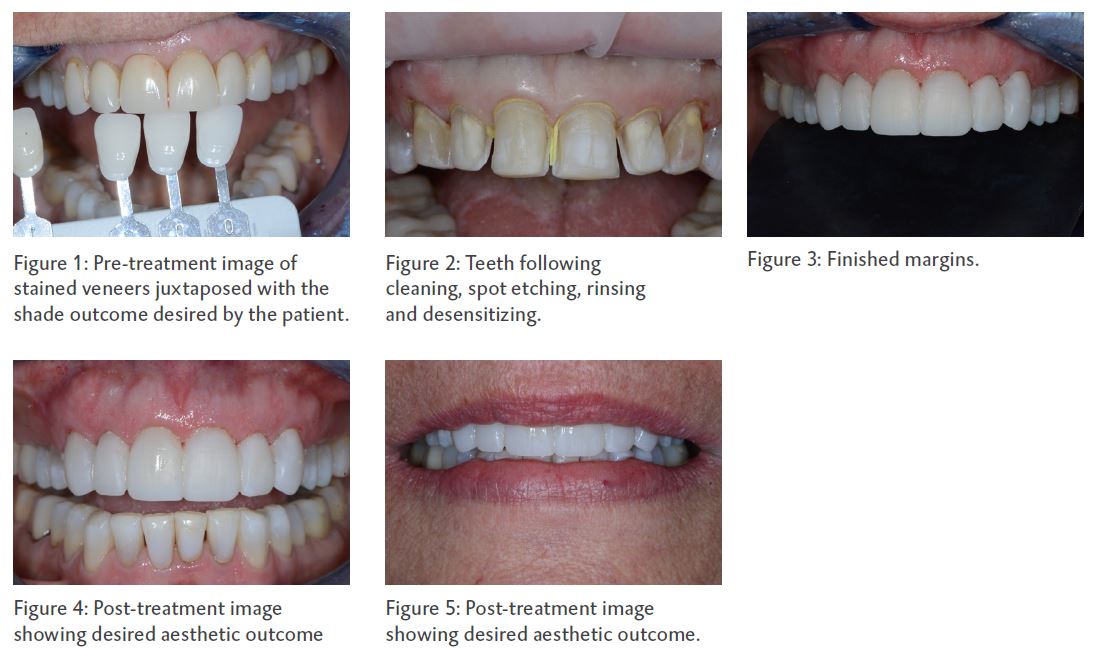by Lee Ann Brady, DMD
By definition, temporary restorations are used for a limited amount of time. In my experience, however, patients want their provisionals to be as attractive, comfortable and durable as final restorations. Over the years, I have found that the exceptional flexural strength and long-term color stability of Luxatemp Ultra temporary material consistently meets my patients’ needs while also delivering excellent efficiency and working properties.
Clinical Case
A 40-year-old female patient presented with ceramic veneers on #6-11. Her natural teeth were stained by tetracycline. The existing veneers were 20 years old, chipped and clearly in need of replacement. She indicated that her desired outcome was an OM1 end shade and a brighter, whiter look. (Figure 1).
The veneer provisionals, with an interproximal shoulder preparation and incisal reduction of 2mm, were created using a two-stage silicone matrix and a bead line technique for shrink wrap. The preps were completed, final impressions taken, and laboratory photos completed. The teeth were cleaned with 2% chlorhexidine, spot etched and rinsed, after which a desensitizer (GLUMA, Kulzer) was applied (Figure 2) . A bisacryl temporary material (Luxatemp Ultra shade Bleach Light, DMG) was placed in the two-stage matrix, seated intra-orally and allowed to come to a complete set for four minutes. The matrix was removed, and an add-on resin designed for use with provisionals (LuxaFlow Ultra, DMG) was used to repair a small void on the left lateral. An alcohol-moistened 2 x 2 was then used to remove the oxygen inhibited layer.
The margins were finished, and embrasures opened with a fine diamond at slow speed (Fig. 3). Very little shaping or trimming was required, as the matrix was made from a lab wax-up. The provisionals were polished with diamond-impregnated polishers (Feather Lite, Brasseler) and diamond polishing paste.
The patient was very happy with the aesthetics and fit of the finished provisionals.

